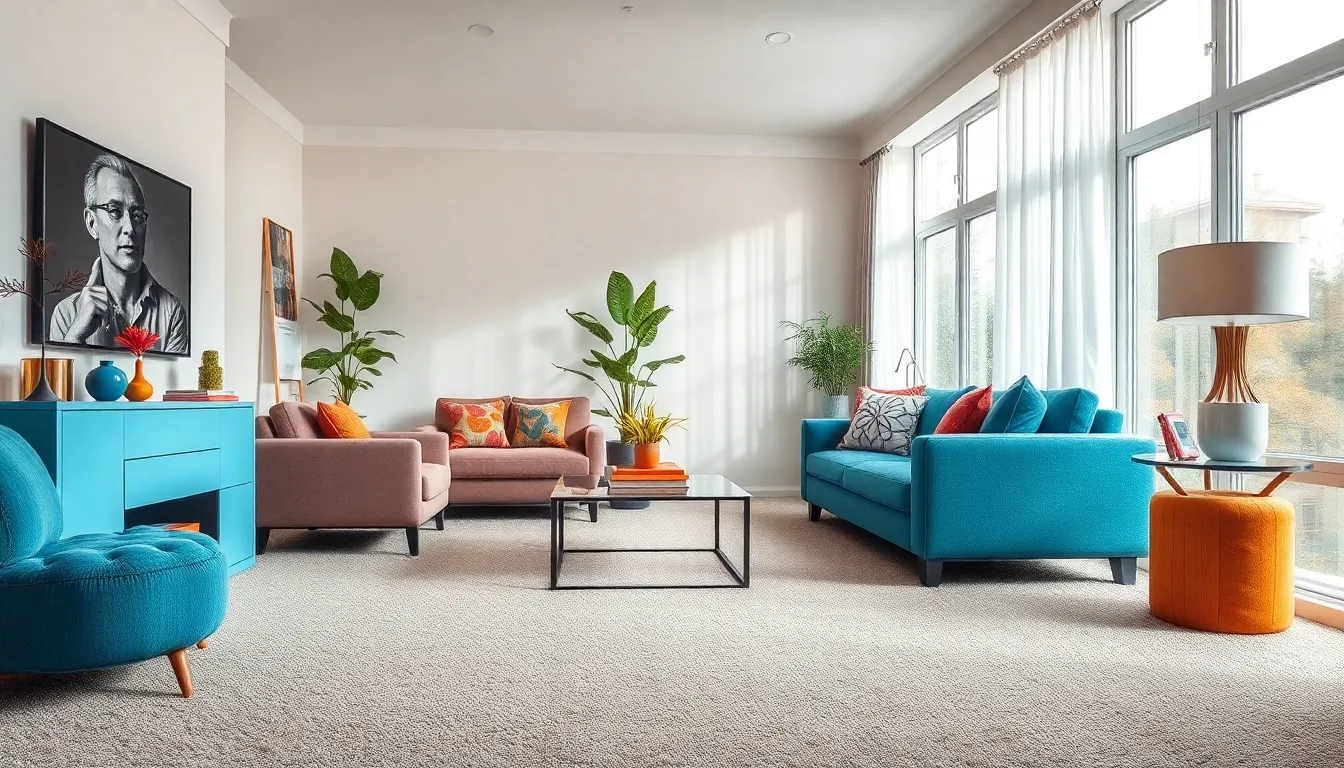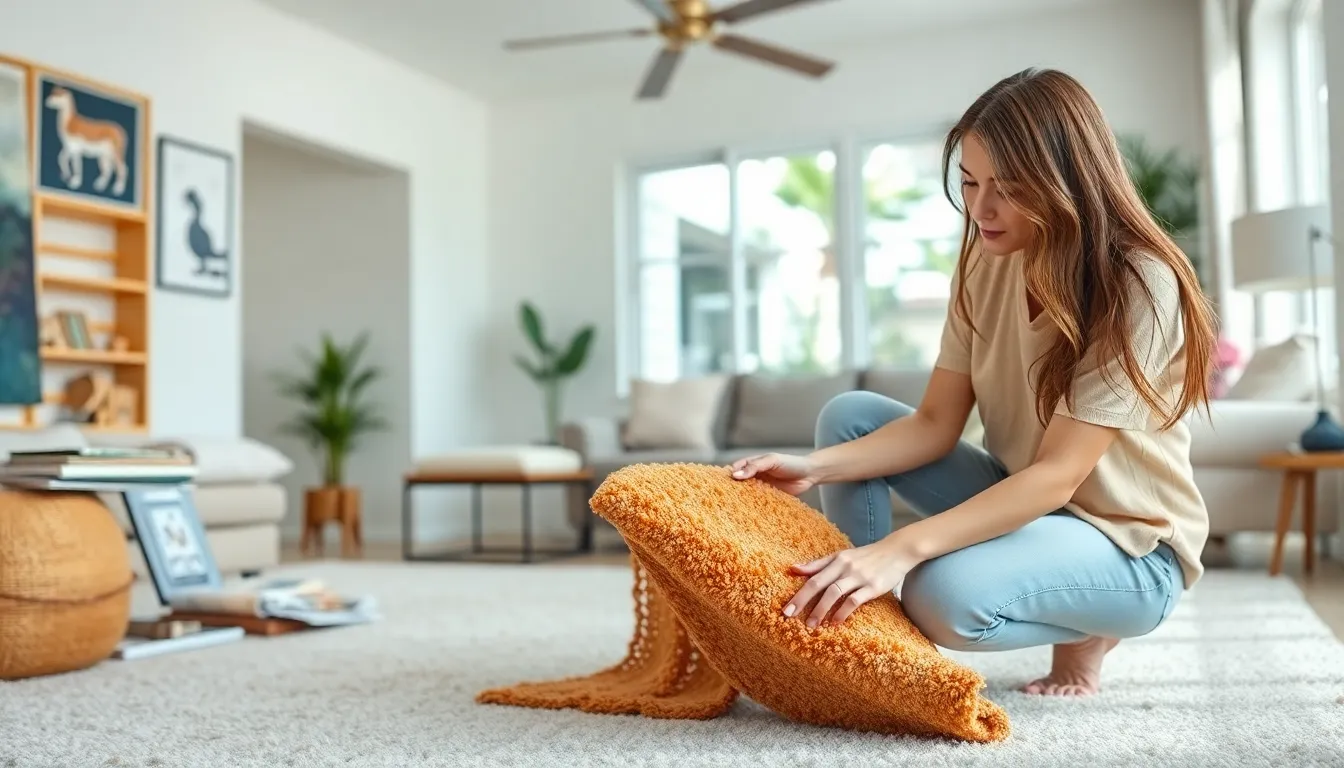Choosing the right carpet can transform a space, adding warmth and style while enhancing comfort. With so many options available, from fibers to patterns, it’s easy to feel overwhelmed. A well-informed decision not only elevates the aesthetic of a room but also ensures durability and ease of maintenance. This carpet buying guide simplifies the process, breaking down essential factors to consider. Whether it’s understanding different materials or learning about pile types, this guide equips readers with the knowledge they need to make confident choices. Dive in and discover how to select the perfect carpet that fits both lifestyle and budget.
Carpet Buying Guide
Understanding carpet types is essential for making an informed purchase. Various options exist, each with unique characteristics that influence comfort, durability, and maintenance.Synthetic Vs. Natural Fibers
Synthetic fibers include nylon, polyester, and polypropylene. These materials offer durability and stain resistance, making them suitable for high-traffic areas. Natural fibers like wool, cotton, and sisal provide comfort and a luxurious feel. Wool, for example, is known for its longevity and natural resistance to dirt and allergens. While synthetic fibers tend to be more affordable, natural options often come with a higher price tag due to their quality and environmental benefits.Carpet Pile Styles
Carpet pile styles significantly affect appearance and performance. Cut pile carpets, such as plush and saxony, provide a soft, luxurious feel underfoot, ideal for bedrooms and living areas. Loop pile carpets, including berber and level loop, offer resilience and durability, making them suitable for high-traffic spaces. Cut-loop pile combines both styles, offering unique textures and patterns. Each pile style affects how the carpet looks and feels, influencing its suitability for different environments.Key Factors in Choosing Carpet

Durability and Stain Resistance
Durability and stain resistance significantly impact carpet longevity. Nylon and polyester fibers excel in durability, making them ideal for high-traffic areas like living rooms and hallways. Wool, while luxurious, requires more maintenance due to its susceptibility to stains. Carpets with a higher density offer better durability, as they withstand wear and tear more effectively. For families with pets or young children, consider carpets treated with stain-resistant technologies to minimize upkeep and extend the carpet’s life.Color and Design Considerations
Color and design play a vital role in the carpet selection process. Lighter colors can make small spaces appear larger, while darker shades add warmth and coziness to large rooms. Patterns, such as stripes or geometric designs, contribute depth and elegance to a space. When selecting a color, consider existing furnishings to ensure a cohesive look. Additionally, think about the room’s purpose; vibrant colors brighten playrooms while neutral tones create a calming atmosphere in bedrooms.Measuring Your Space
Measuring the area accurately is crucial for selecting the right carpet. Proper measurements ensure a seamless fit and reduce excess material.How to Measure for Carpet
Measure each room’s length and width. Use a tape measure for precise readings, and take measurements in inches. Multiply the length by the width to determine the total square footage. For irregularly shaped rooms, break the area into rectangles or squares, calculate each section’s square footage, and sum them. Always double-check measurements for accuracy.Accounting for Waste
Consider waste when planning for carpet needs. Typically, adding 10% to 15% of the total square footage covers extra cuts, seams, and miscalculations. If the room has complex shapes, such as alcoves or closets, increase this percentage. Accurate waste accounting ensures sufficient material, avoiding delays and unexpected costs during installation.Installation Options
Selecting the right installation method impacts the carpet’s longevity and performance. Two main options exist: DIY installation and hiring professional installers.DIY Installation Tips
Choosing DIY installation requires preparation and the right tools. Gather necessary supplies like a carpet stretcher, knee kicker, and tacks. Begin by ensuring the subfloor is clean and smooth. Measure carefully and cut the carpet to fit the room dimensions. It’s crucial to secure seams properly and stretch the carpet tightly to prevent wrinkles. Finally, trim excess material for a polished edge. Online tutorials offer visual guidance and tips to enhance the installation experience.Hiring Professional Installers
Opting for professional installers guarantees quality and efficiency. Professionals possess experience and expertise in handling various carpet types and installation challenges. Their knowledge ensures proper subfloor preparation, precise measurements, and effective seam unions. Additionally, hiring professionals reduces the risk of mistakes that could lead to premature wear or damage. Costs may vary based on the project’s scope, but investing in professional installation can save time and ensure a flawless finish. Always check references and read reviews to select reputable installers.Budgeting for Your Carpet
Budgeting for carpet involves understanding material costs and additional expenses. Accurate budgeting ensures a stress-free purchase and installation process.Price Ranges for Different Carpet Types
Carpet prices vary significantly based on material and construction.| Carpet Type | Price Range (per square foot) |
|---|---|
| Nylon | $3 – $7 |
| Polyester | $2 – $5 |
| Wool | $5 – $15 |
| Berber | $2 – $4 |
| Cut Pile | $3 – $10 |
| Loop Pile | $2 – $6 |
Additional Costs to Consider
Beyond material costs, additional expenses influence the overall budget.-
- Padding: Essential for comfort, padding ranges from $0.50 to $2 per square foot, depending on quality.
-
- Installation: Professional installation fees typically range from $1 to $4 per square foot, varying based on complexity.
-
- Removal of Old Carpet: If replacing existing carpet, removal may incur costs between $0.50 and $1 per square foot.
-
- Stain Treatments: Adding stain-resistant treatments can add $0.50 to $1.50 per square foot.














